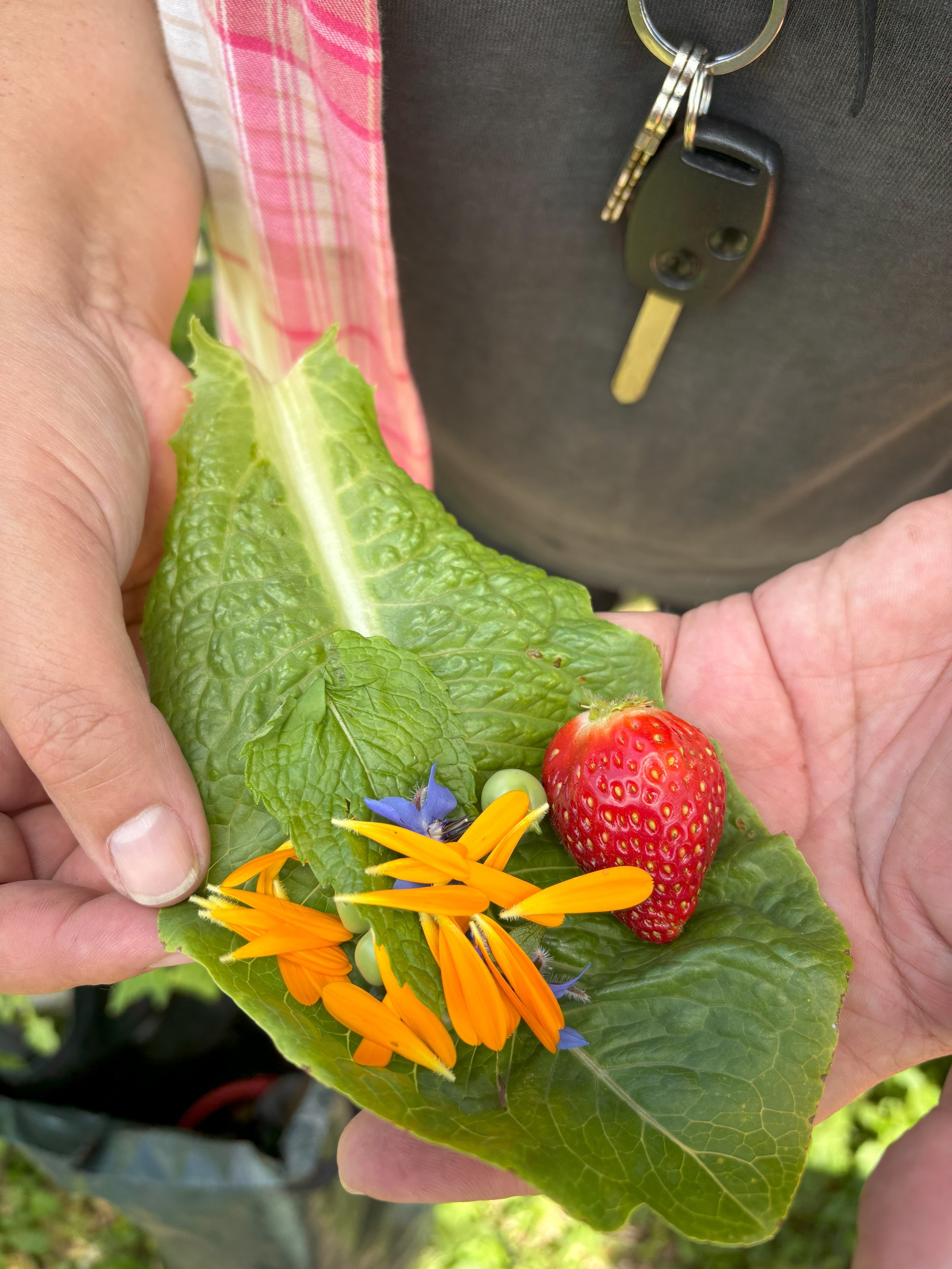Kaiwaka Māra @ Boundary Rd - A tour
At 274 Boundary the garden is in full swing, there are flowers and native shrubs and trees at the front of the property, providing food for our pollinators and manu (birds). Head up the drive past the bike hub and you will see some raised beds with spinach, lettuce, bananas, strawberries, hue, peas thriving with bee loving borage, calendula and nasturtium.
Pick and eat!
Say kia ora to Papa in the tool shed before heading around the back to see the compost bins - worms farms and compost bays turning through greens and browns to make nutrient rich compost to go back into the māra. In the corner a banana circle, another compost of sorts is proving its worth growing a healthy crop of banana trees.
Banana circle interplanted with taro.
Tāmaki Makaurau provides ideal growing conditions for banana trees - wet and warm weather however for plump bunches of bananas the trees need food. Banana circles are an all in one - the compost circle provides food and waste reduction as well as the ability to soak up water from boggy spots. (Watch this space for a how to guide on making a banana circle.)
On the other side of the garden is the ko’anga nursery filled with seedlings. Under kaitiaki of the PVA crew, seedlings are raised from seed with care and aroha and then ‘hardened off’ outside. This process and care gives the plants the best start making them strong and healthy to grow. Worm tea from the worm farms is used to feed the seedlings connecting mauri from the māra to the new plants, a beautiful circle of life.
Ko’anga Nursery
At both entrances to the ko’anga nursery there is more garden to see. One side is sloping, not a typical site for a garden, however kaimahi Kristian has terraced the site using tyres, rocks and tree trunks. Inspired by manavai in Rapa Nui (Easter Island), that Kristian learnt about during his time there, the planting and embankment is strategic to work with nature and respond to the environment. The planting of key plants - banana, taro and bananas that Kristian refers to as the ‘Wholly Trinity’ are strategically planted to soak up rainwater, cover soil and provide kai all year round.
Kaitiaki and kaimahi Kristian in the manavai.
(Manavai: “The manavai are simple structures formed by double walls of rough stones, filled with rubble, and approximately circular in plan. They typically rise about 1.5 meters from the ground surface, enclosing a small cultivation area that is normally less than 10 square meters.” https://manavairapanui.org/en/los-manavai/ )
On the other side of the greenhouse are two raised beds which are growing heritage plants specifically for seed saving. Among highly valued plants that were brought on the waka to Aotearoa are other varieties of edible plants that have cultural significance to Te Moana-nui-a-Kiwa (Islands of the Pacific Ocean) communities and biodiversity.
The māra is best experienced in person, feel free to drop in and lend a hand. 41 Boundary Rd, Clover Park, open on Fridays 10am -12pm. Haere mai!




